Why many riders choose smaller and less expensive motorcycles:
Motorcycles have gotten bigger, more complex, and MUCH more expensive. Years ago, many riders used to buy a motorcycle as the least expensive motorized transportation. TODAY most motorcycle owners also own another vehicle, and often several motorcycles!
Given the many options in style, size and price range why do so many motorcycle owners CHOOSE smaller models? Here are a few reasons:
- Lower Purchase Cost
The 2020 CSC RX3 Adventure sells for $3,995.00. Most people who buy the RX3 Adventure can afford more expensive bikes – or already own multiple motorcycles – but they simply can’t justify the added cost. The CSC RX3 Adventure includes dozens of features (like a functional windshield, large gas tank, racks and luggage) that cost HUNDREDS extra on other street or adventure bikes. You could spend DOUBLE to duplicate the full list of standard features on other bare dual-sport motorcycles. Plus, some standard features included on the CSC RX3 Adventure are simply not available at any cost on other brands, like the full digital dash, pre-wired accessory outlets and 300-watt alternator.
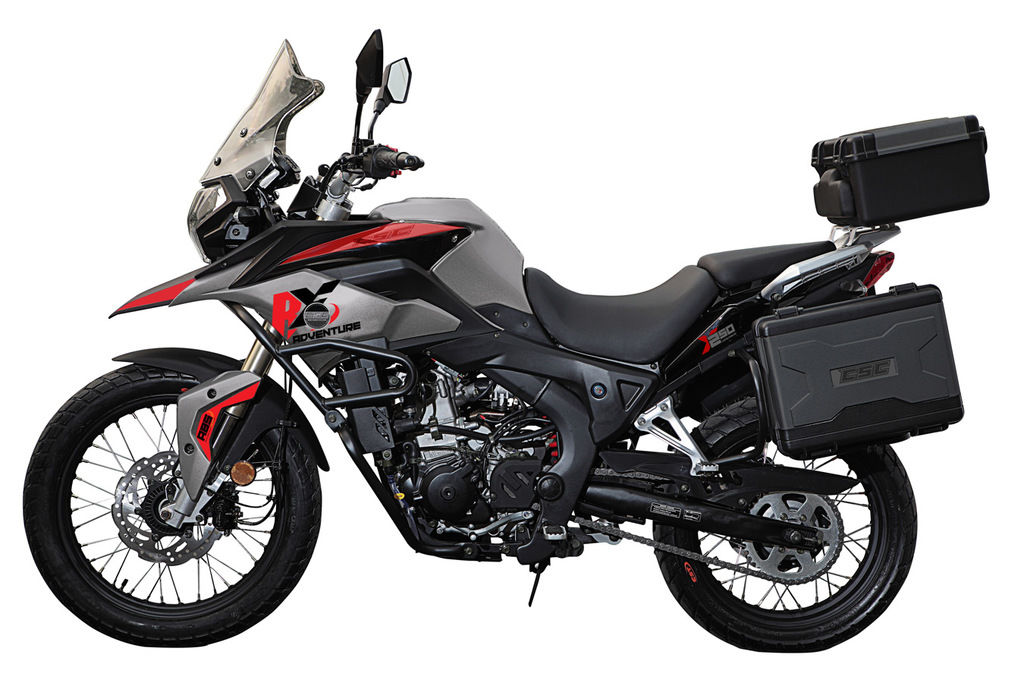
2020 CSC RX3 Adventure – Fully Equipped!
The new 2021 CSC RX4 also has an impressive list of standard features. The stock bike includes a comfortable two-up seat, adjustable windshield, 12-volt charging outlets, and more. The CSC RX4 with a 450cc fuel-injected motor and loads of ADV touring features sells for only $5,395.00 – again a huge discount compared to any competitive model. Reasonably-priced options include switchable ABS brakes, molded luggage and mounting racks, soft luggage, deluxe aluminum luggage, and cast wheels and tubeless tires.
Some riders slash the cost of entry by choosing the smaller CSC SG250 San Gabriel or TT250 Enduro for their riding adventures. Both models share the same 230cc air-cooled engine which has been proven dependable in motorcycle models around the world for nearly 50 years. Don’t think it’s possible to travel on a 230cc motorcycle? Check out the Ride Report of the five Texans who rode bone-stock CSC TT250’s over 2,000 miles from the Mexican to Canadian borders.
Big bikes are NOT required for big adventures! Mike Saunders, Lost With Mike, rode from Key West to Alaska and beyond on a 50cc scooter! Riders have completed the cross-country Trans-America Trail on 125cc cycles. Riders have toured on 150cc California Scooter Mustangs! Don’t forget that thousands of people tour North America and the world by bicycle. In comparison, the TT250 or SG250 seem like “super bikes”!
You don’t need to spend two, four or ten times more on a motorcycle to enjoy an “adventure”. Can you travel six times farther or faster on an expensive motorcycle? Do you see ten times more scenery, sunrises, or wildlife? If you over-spend on an “adventure bike”, will you still be able to afford to take off on an adventure?
- Lower Operating, Maintenance, Repair, and Insurance Costs
Expensive motorcycles are as complex as modern automobiles. Everything from electronic traction modes to computerized suspension has removed these motorcycles from the repair and maintenance capacity of most owners. The result is that an annual inspection and routine service can cost more than $1,000.00!
Generic parts and accessories are also becoming a thing of the past. High tech motorcycles require proprietary parts, circuits, and sensors and even specialized tools to perform routine repairs. The more elite the brand, the more widely spaced are qualified service centers.
Expensive motorcycles also demand expensive insurance rates. Like modern automobiles, a crash requires expensive parts and expensive shop labor charges. A minor mishap can involve thousands of dollars in parts and labor to restore the bike, and probably a towing expense as well.
A low priced motorcycle costs much less to insure than a $20,000 motorcycle. That is one reason that CSC Motorcycles are often purchased by riders who already have other bikes but are looking to add another motorcycle to fill a riding niche. Less expensive motorcycles are, by definition, less complex and more accessible to the owner or an independent cycle shop. In the “middle of nowhere” you may even find generic parts to complete repairs. Unlike many complex and expensive models, CSC motorcycles do not require premium gas.
CSC Motorcycles has developed a complete Owner’s Manual on a DVD that is provided with each motorcycle. In addition, CSCMotorcycles.com has a full tutorial section which instructs the owner how to perform regular maintenance functions. Everything from changing oil, to changing tires, to adjusting valves is clearly demonstrated. CSC encourages bike owners to learn to perform their own routine maintenance. Not only does learning how to perform simple repairs save time and money, but it also boosts the owner’s confidence knowing that they can handle common issues that arise on the road.
CSC Motorcycles stocks every part for each model. Parts can be shipped overnight, if necessary. In addition, CSC also has created the CSC Authorized Service Center program. CSC owners can have parts sent to their favorite local independent motorcycle shop for warranty repairs or routine maintenance. When on the road, repairs and parts deliveries can be handled by ANY motorcycle shop across North America.
- Safer Riding, Especially Older, Smaller, and Solo Riders
When you ride a heavy motorcycle, you are subject to the simple Laws of Physics related to momentum and inertia. It takes more speed and power to navigate an uphill switchback. It requires harder braking to come to a stop. Double the complexity for dual sport riding in the mud or sand or rocks. When – not if – you tip over, your body and the fragile exposed parts of the bike are driven into the ground with exponentially more force on a heavy motorcycle.
Even a middleweight motorcycle like the RX3 Adventure weighs much more than any of us can bench press. But levering a 375-pound bike back onto its wheels is infinitely easier than a 600 or 700-pound monster. Many riders have flopped over in slick mud or off-camber hills where it took FOUR or more people to stand up a huge adventure cruiser.
If you have experience riding a bigger motorcycle, the smaller bikes from CSC will feel nimble and “flickable” in comparison. You will have better control on corners, when braking, and in rough conditions. If you have any plans for riding solo, and don’t want to rely on a stranger passing by to help you put your motorcycle back on its wheels, then you should seriously consider a smaller and lighter bike. When you fall it will be in the WORST sections – nasty boulders, sharpest ledges, or deepest water crossing – usually the farthest from any assistance.
The RX3 Adventure doesn’t need reverse to maneuver in your garage or to turn around on a forest road. If you tip it over the SG250 or TT250 you can pick it up by yourself. Even with the luggage loaded on the RX4, WHEN you drop it just back into it and lift with your legs.
- Simplicity and Minimalism
Adventure motorcycle travelers have been sold the lie that enormous machines are required for touring. The Long Way Round popularized the idea of extended cross-country motorcycle travel. Most of the problems that Charley and Ewan had to overcome were self-inflicted by their grossly overloaded motorcycles. Then, when the frame on Claudio’s big, expensive bike finally broke in half, he completed the Russian adventure on the “Red Devil”. This generic 125cc Russian bike went mile for mile with the lumbering (and expensive) 1200cc pack mules.
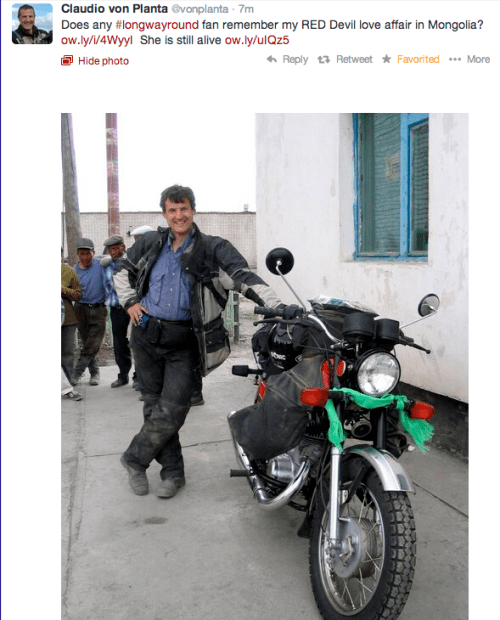
Claudio von Planta photo from Long Way Round
Around the world, hundreds of thousands of people are traveling for fun as well as daily transportation on motorcycles that cost less than what the modern “ADV” rider spends on aluminum “adventure” luggage.
What is required for traveling by motorcycle? Far less than we picture in our minds when thinking of an “adventure bike”. American’s are quick to jump to the largest and most expensive option when solving any question. Bigger is Better is the motto. But many are also converting to Less is More.
A smaller motorcycle is not only less expensive in many ways, it is also less intrusive and allows us to be connected closer to the sections we are traversing.
Andrew Pain is the author of Going Small and Going Small 2.0, described as “The Argument for Small Roads, Small Budget, Small Motorcycle”. He advocates for getting off the freeway, setting a slower pace, and enjoying the journey. He encourages riders to choose the smallest motorcycle to cover the miles, and then pack as light as possible.
If you think you NEED a huge motorcycle for extended tours just do a Google search for bicycle touring or bike packing to learn how these adventurers pack for long trips. Then add a few motorcycle tools and you have a packing list for a minimalist motorcycle trip that can span weeks or months – and you don’t have to supply the muscle to carry the weight!
The CSC RX3 Adventure comes fully-equipped with side cases and a top box. Several hard and soft luggage options are available from CSC for the new RX4. Add a duffel on the passenger seat and you have room for everything you need for indefinite travel. Even simpler, throw a set of soft bags over the seat of the CSC SG250 or TT250 Enduro and you are ready for REAL adventure travel. If you can’t fit all your stuff into these smaller sets of luggage, you are simply packing too many non-essentials.
While you are trying to minimize your list of “necessities”, remind yourself that a 250cc motorcycle is considered an excessive luxury in much of the world. In many countries, a 100cc or 125cc motorcycle is the only FAMILY vehicle! These small motorcycles are even converted into 3-wheeled trucks and taxis. It is only our North American access to 1200, 1500 and 1700cc motorcycles that makes a 250cc RX3 Adventure or 450cc CSC RX4 seem “small”.
- Rider Maturity
Ever since you put a card in the spokes of your bicycle as a kid, you wanted a motorcycle. You wanted the freedom that only a motorcycle can provide – that is, the ability to go almost anywhere. Just you and your plans. Maybe with a destination in mind. Maybe just for the joy of riding.
If you started riding motorcycles as a young person you might have placed a higher importance on horsepower, speed and noise. Manufacturers happily provide motorcycles that jump high, race fast, burn tires and roar loudly.
But some of us (not all, for sure) reach a point where we are happy to ride “approximately” the speed limit on the highway. We have outgrown the urge to ride wheelies or make long jumps. Once you leave the pavement, how many cc’s are required to cruise at 25 or 30 miles per hour? BigDog, who is known in ADVrider circles for his adventures from coast to coast and from Mexico to Alaska on a 250cc bike is famous for his quote, “Anything bigger than 250cc is just wheel spin.”
If all this describes you, a smaller motorcycle fits your personality. The CSC RX3 Adventure is capable of cruising at well over 70 miles per hour – and that’s with a single cylinder 250cc fuel-injected engine! If you mainly use your motorcycle for commuting, pleasure riding or shorter highway excursions and rarely hit the freeway, the 230cc CSC SG250 San Gabriel may be exactly what you need. The 230cc TT250 Enduro will tackle any trail and then commute to work with ease. If you need more highway speed or want to ride two-up much of the time, the “much larger” 450cc CSC RX4 may be the bike for you.
Maturity may also be a good way to describe setting lower mileage objectives. If you are obsessed with non-stop, 1000-mile Iron Butt rides, you are not a prospect for a smaller bike. But if you are willing to be flexible you will magnify the volume of experiences you enjoy. Slow down. Take a siesta. Start later. Quit earlier in the day. Averaging over 500 miles, day after day and is stressful – which seems to defeat the purpose of motorcycle touring in the first place.
- BONUS Reason: Fun!
It’s not surprising that most CSC RX4, RX3 Adventure, TT250 and SG250 owners have owned or currently also own much larger motorcycles. Many have decades of experience on large cruisers and adventure-style motorcycles. But most readily admit that the motorcycle that they ride the most is their smaller CSC. Why do riders that have larger motorcycles that cost much more their CSC? Because it’s fun!
Riding a heavy motorcycle on rough roads transmits a pounding through your arms and back. Riding a heavy motorcycle off-road through boulders or sharp rock ledges is even more painful. But a light cycle skips across rough sections with less stress to the rider and the bike.
The CSC RX3 Adventure, for example, comes equipped with engine guards, pannier racks, side panniers and top box and lots of other accessories as standard equipment. The stock bike weighs about 385 pounds, so it is not a lightweight Supermoto. (Remove the guards, racks and luggage and you have an RX3 “Scrambler” that weighs about 335 pounds!) But if you are used to riding, stopping, pushing and parking a 500, 600, or 750-pound bike, the RX3 feels like a 10-speed! Even more so with the lighter TT250 or SG250.
Revzilla recently reviewed the 2018 CSC SG250 San Gabriel and admitted that the small bike was FUN because of its simplicity. Spurgeon concluded, “The CSC became my bike of choice for riding around the city.” (The new 2020 SG250 is even BETTER!)
CSC Motorcycle riders often use the word FUN to describe the experience of riding the smaller motorcycle. RIDING a small motorcycle is a different sensory experience than DRIVING a huge cruiser, maybe like piloting a 2-seater sports car compared to navigating a one-ton pickup truck.
Visit CSC Motorcycles at CSCMotorcycles.com for more information about the various models. We hope you agree that smaller motorcycles can deliver MORE fun, too!
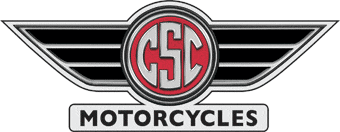
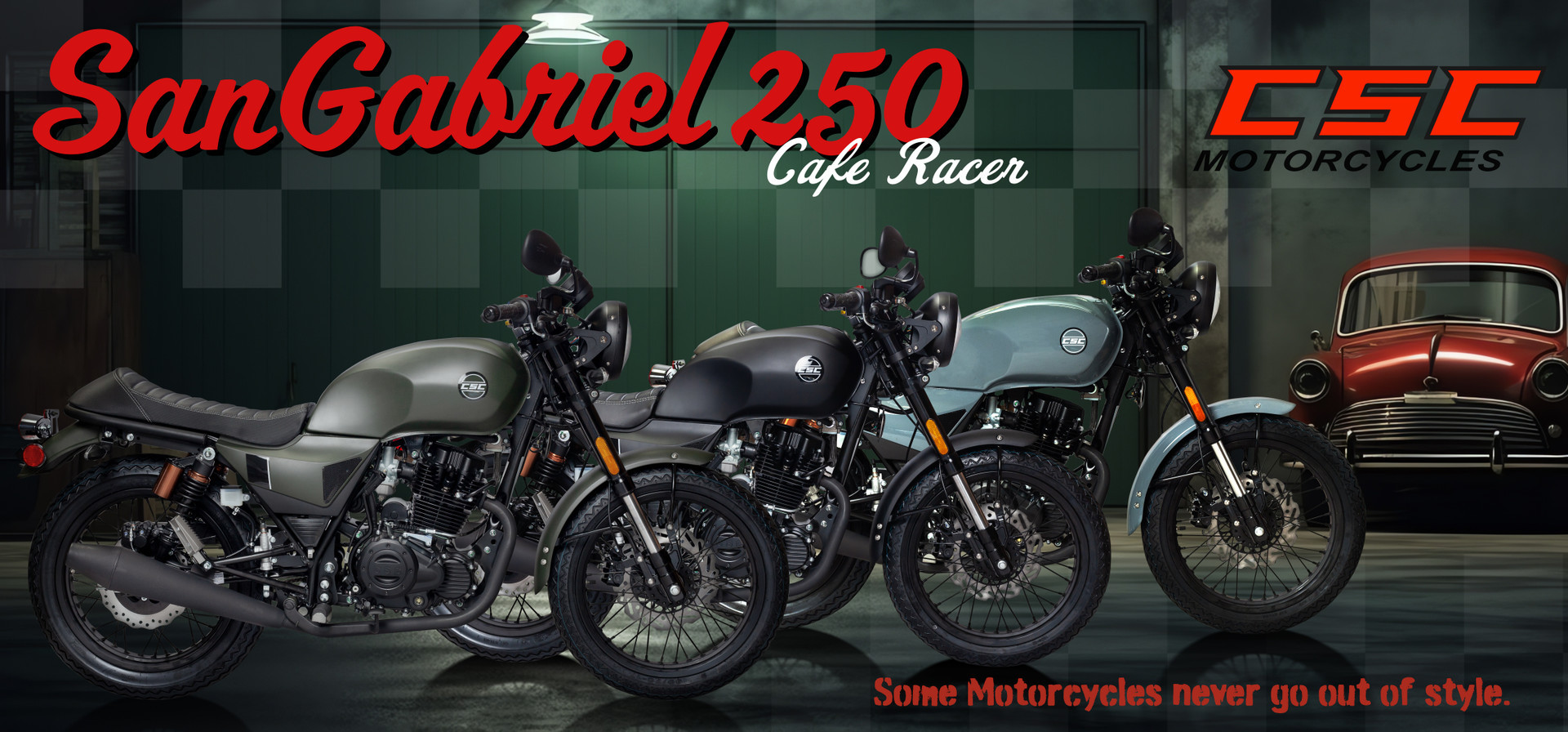
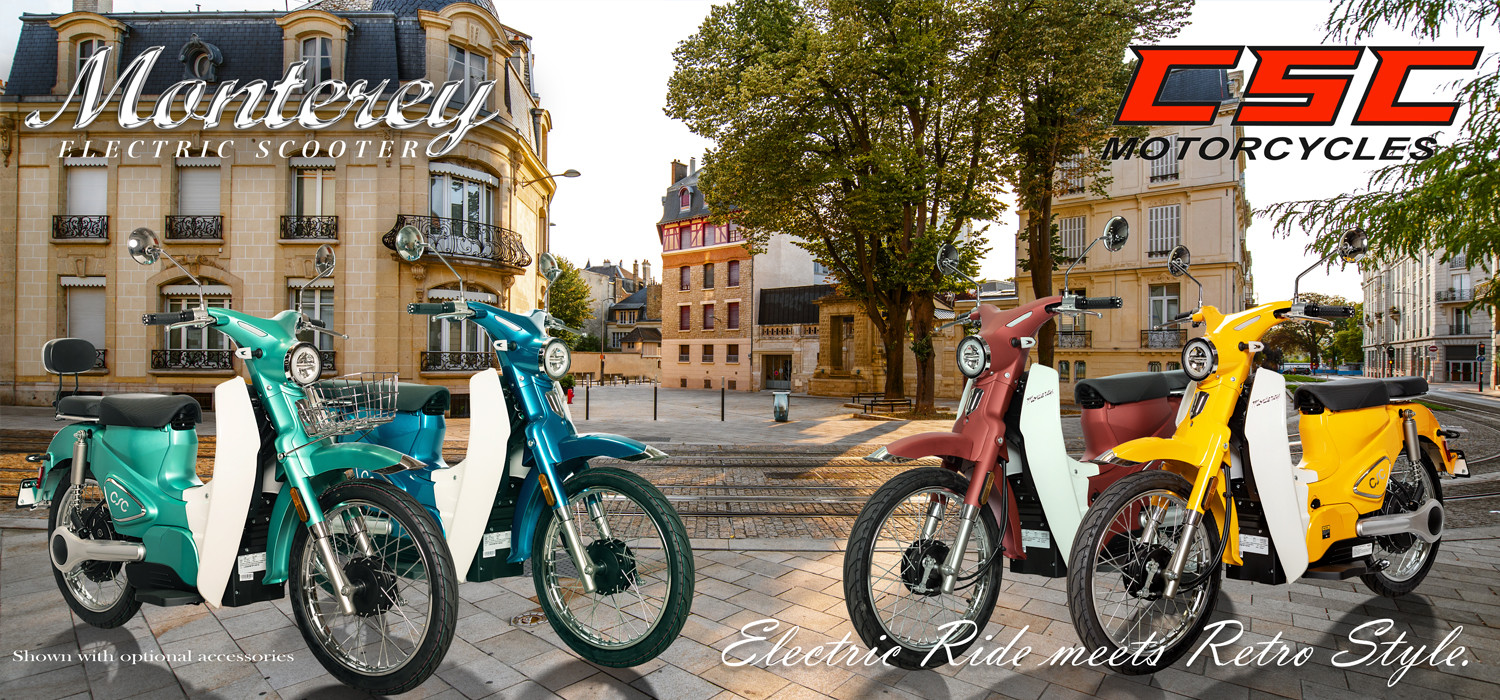
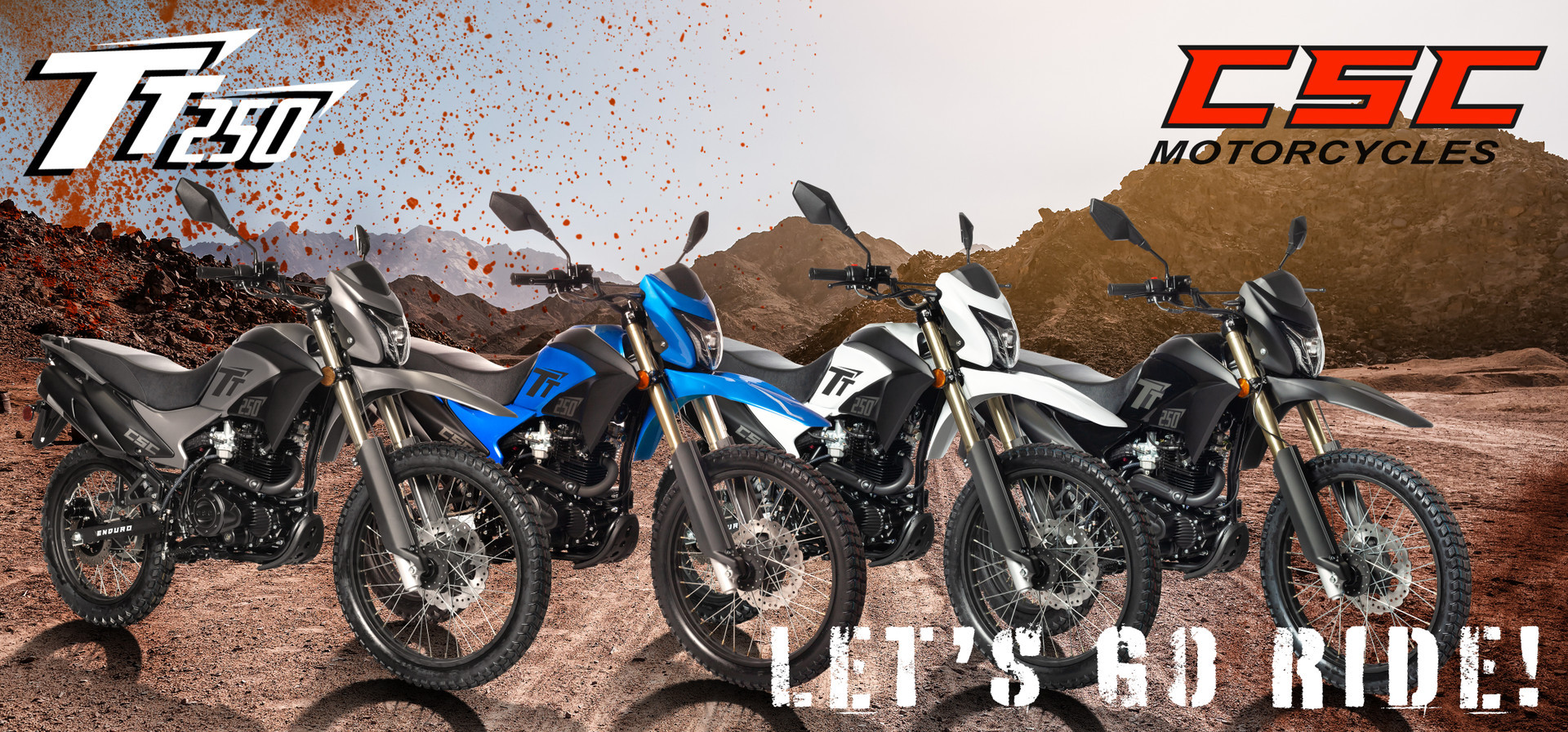
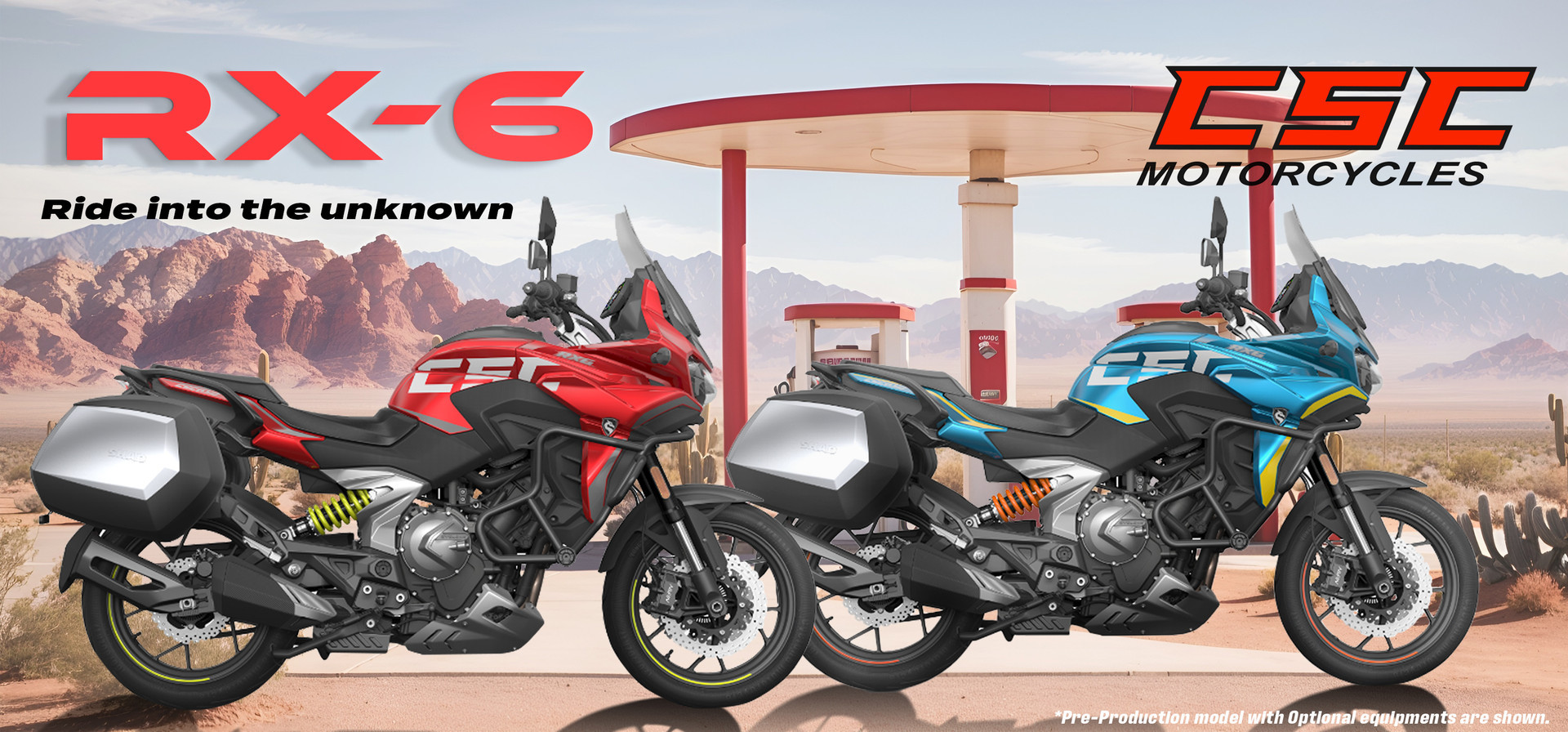
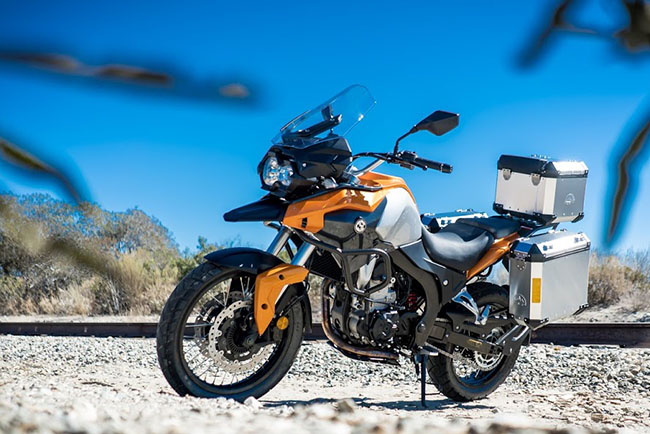
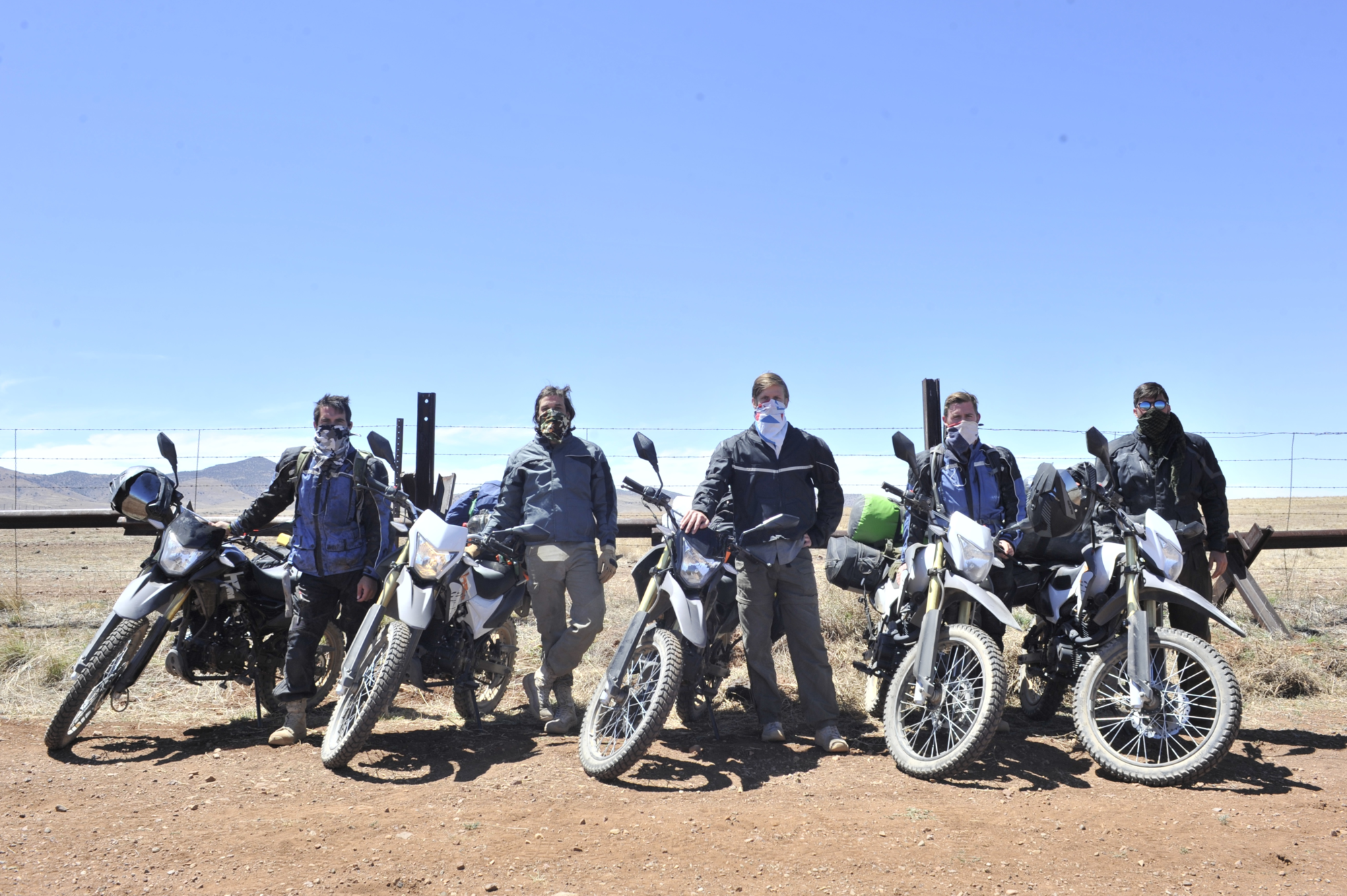

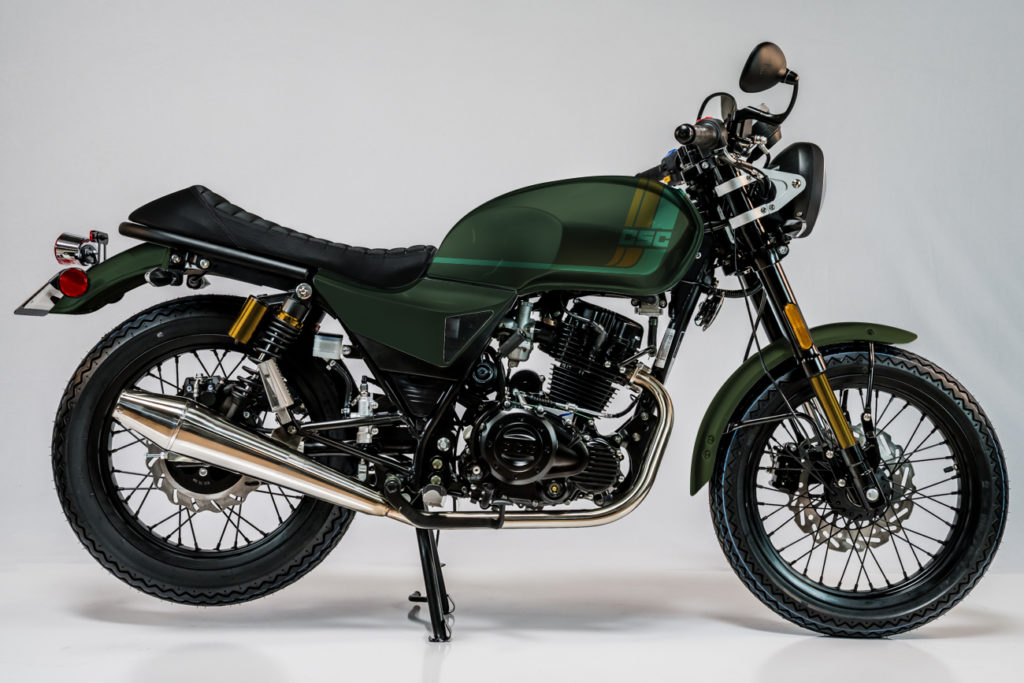
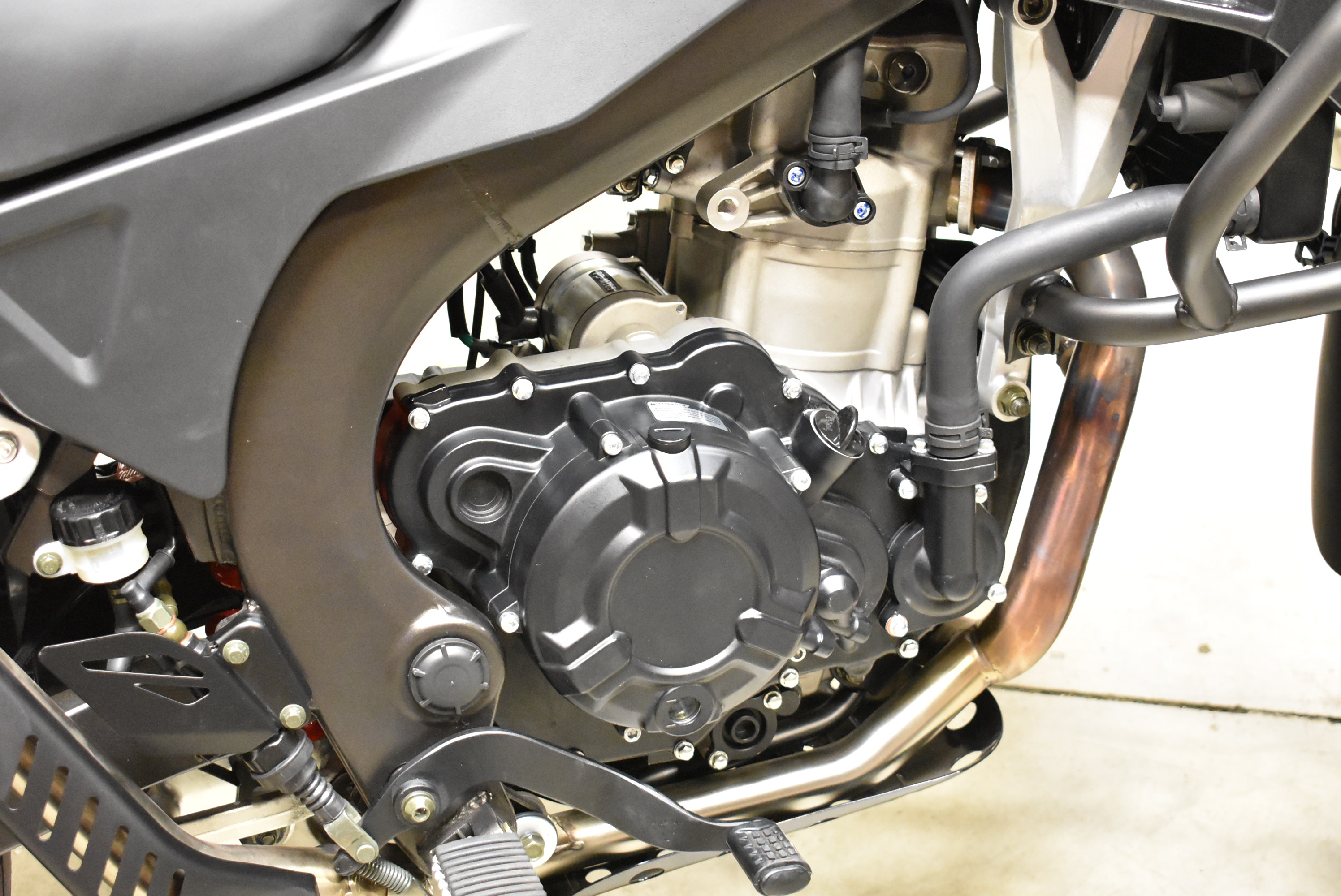
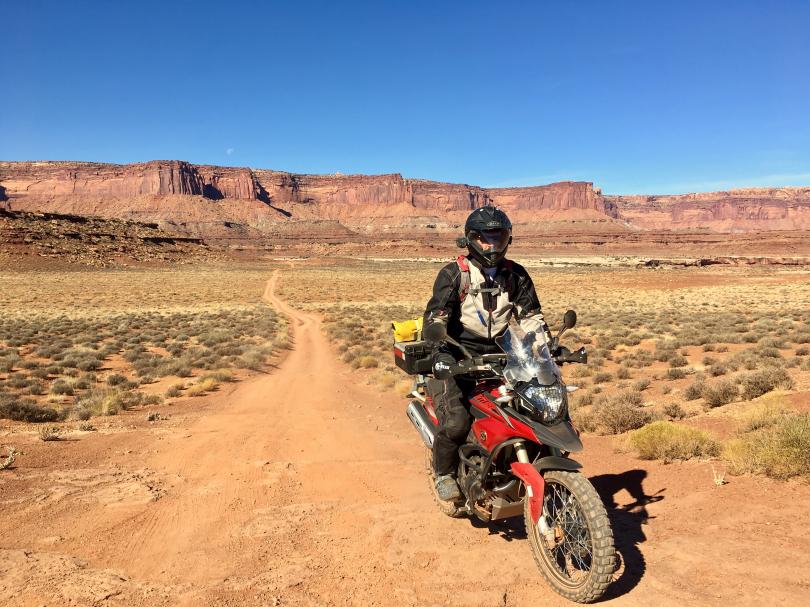
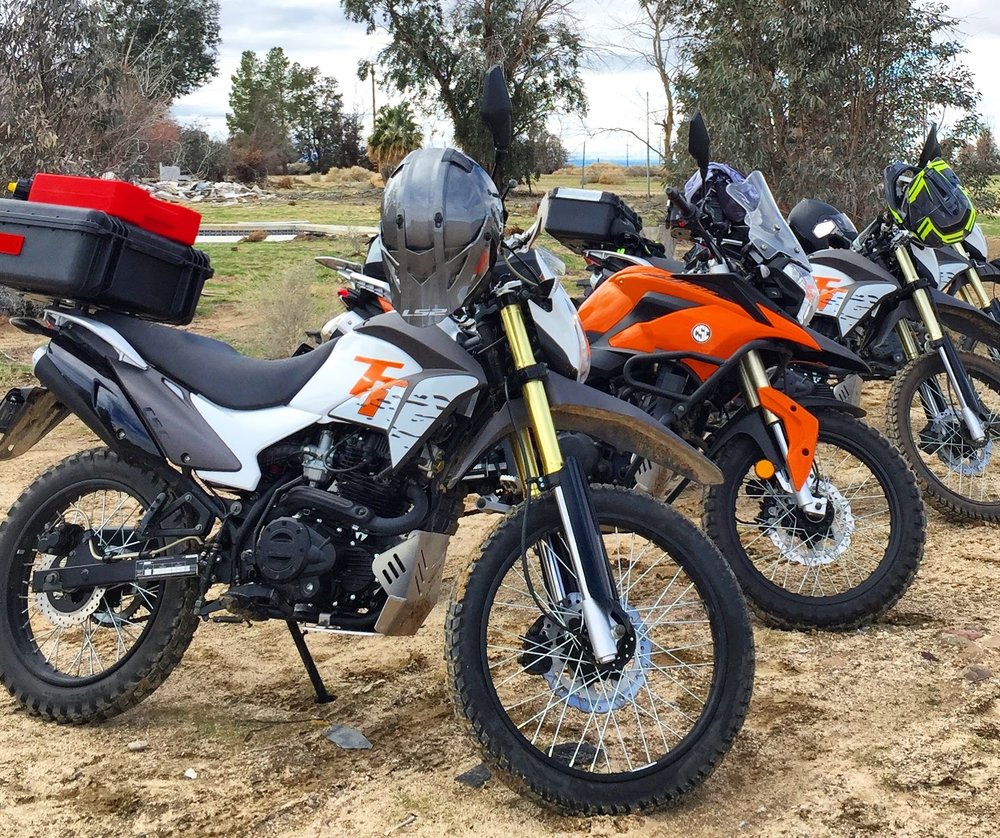
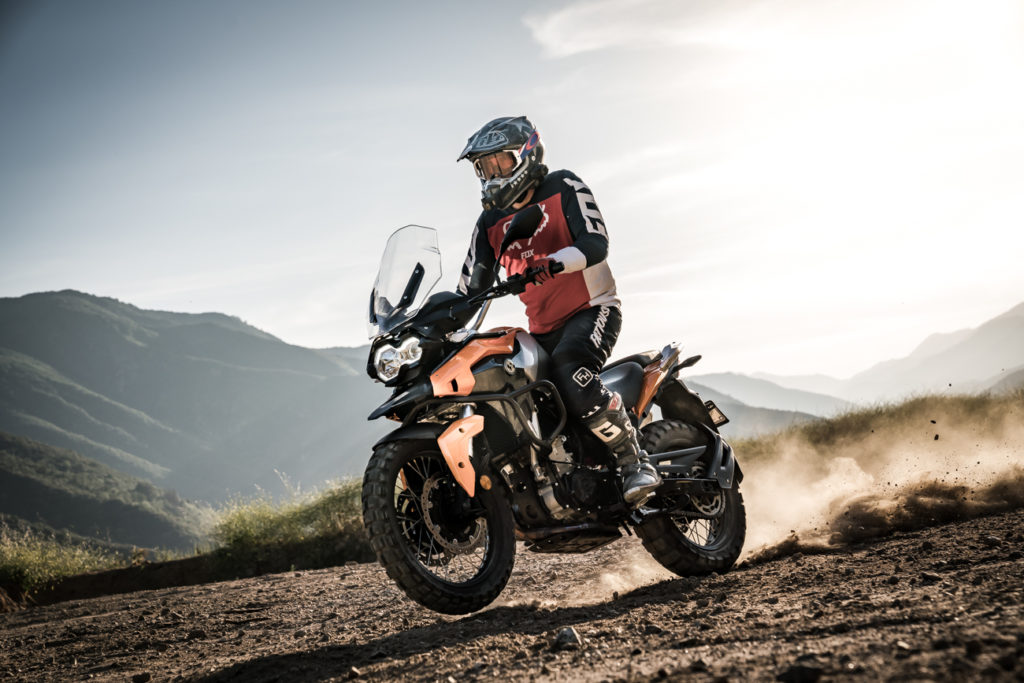
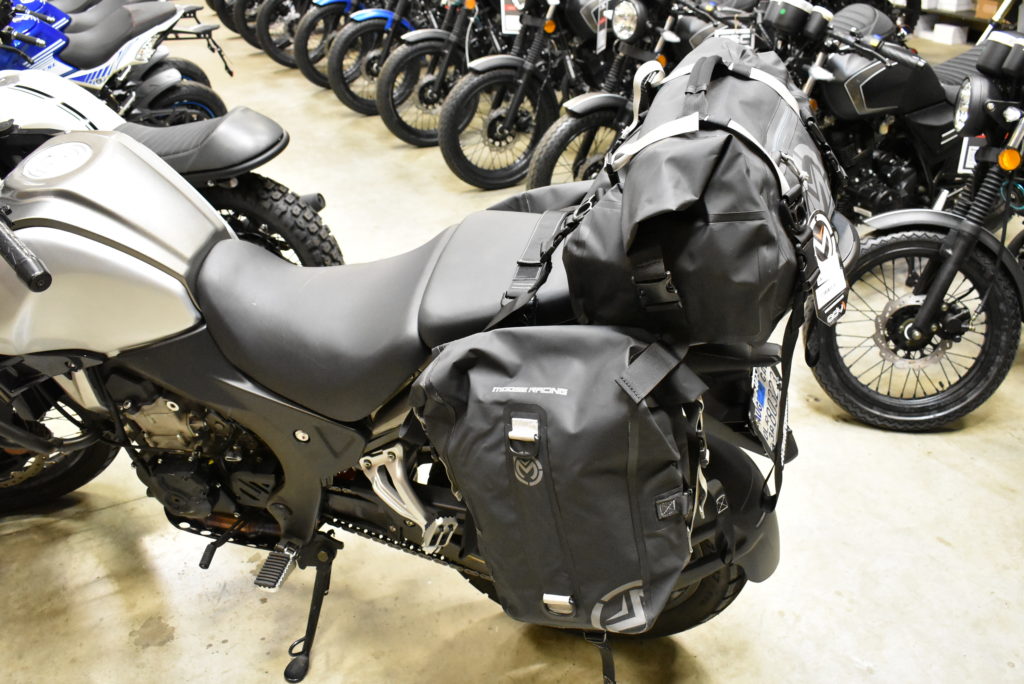
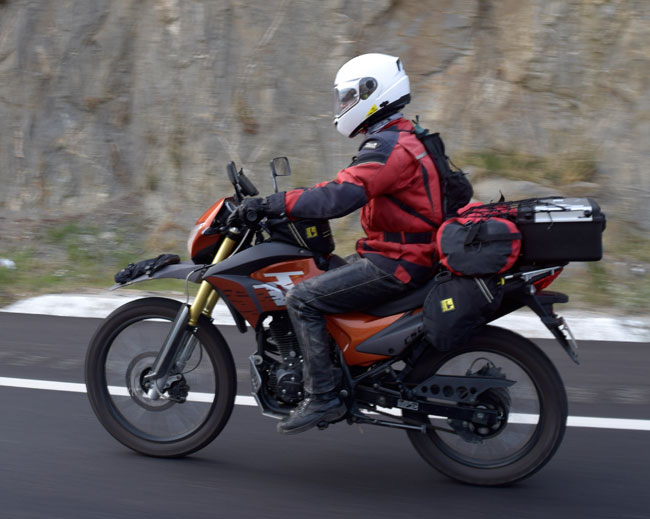
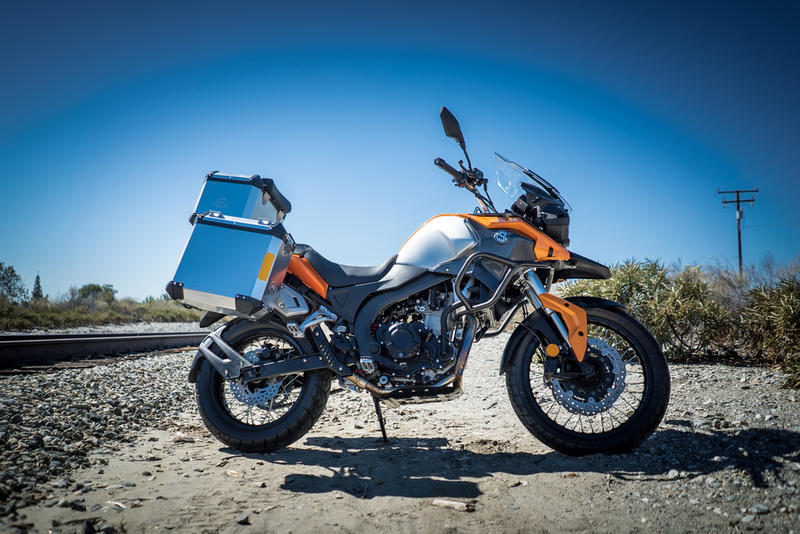
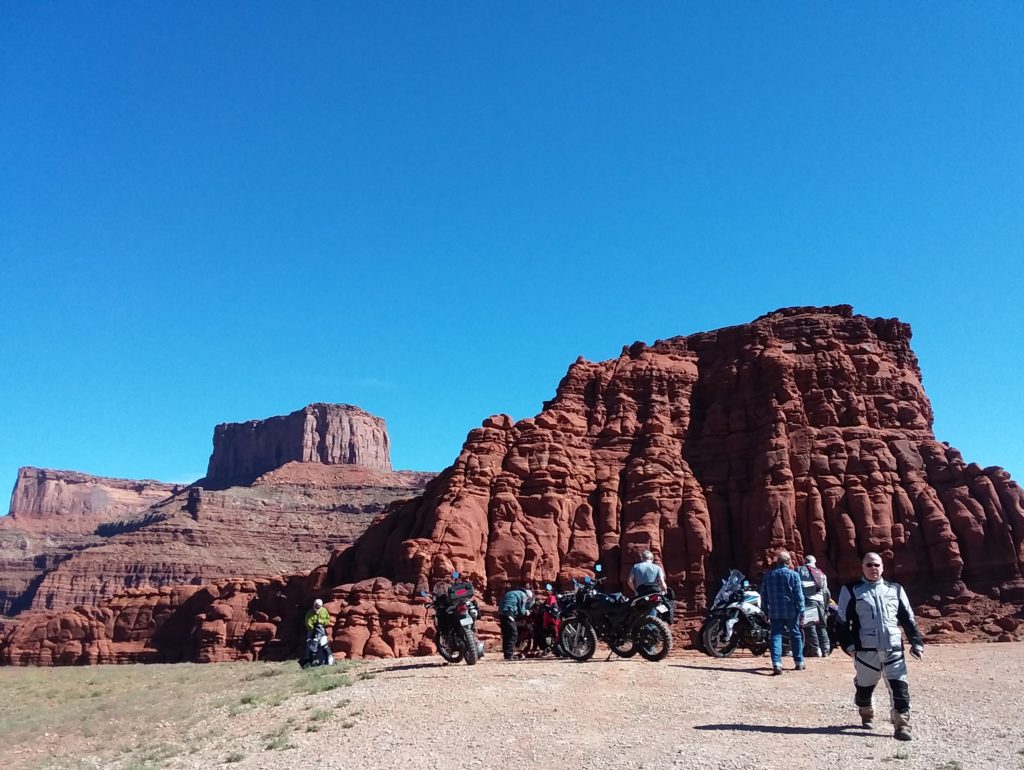
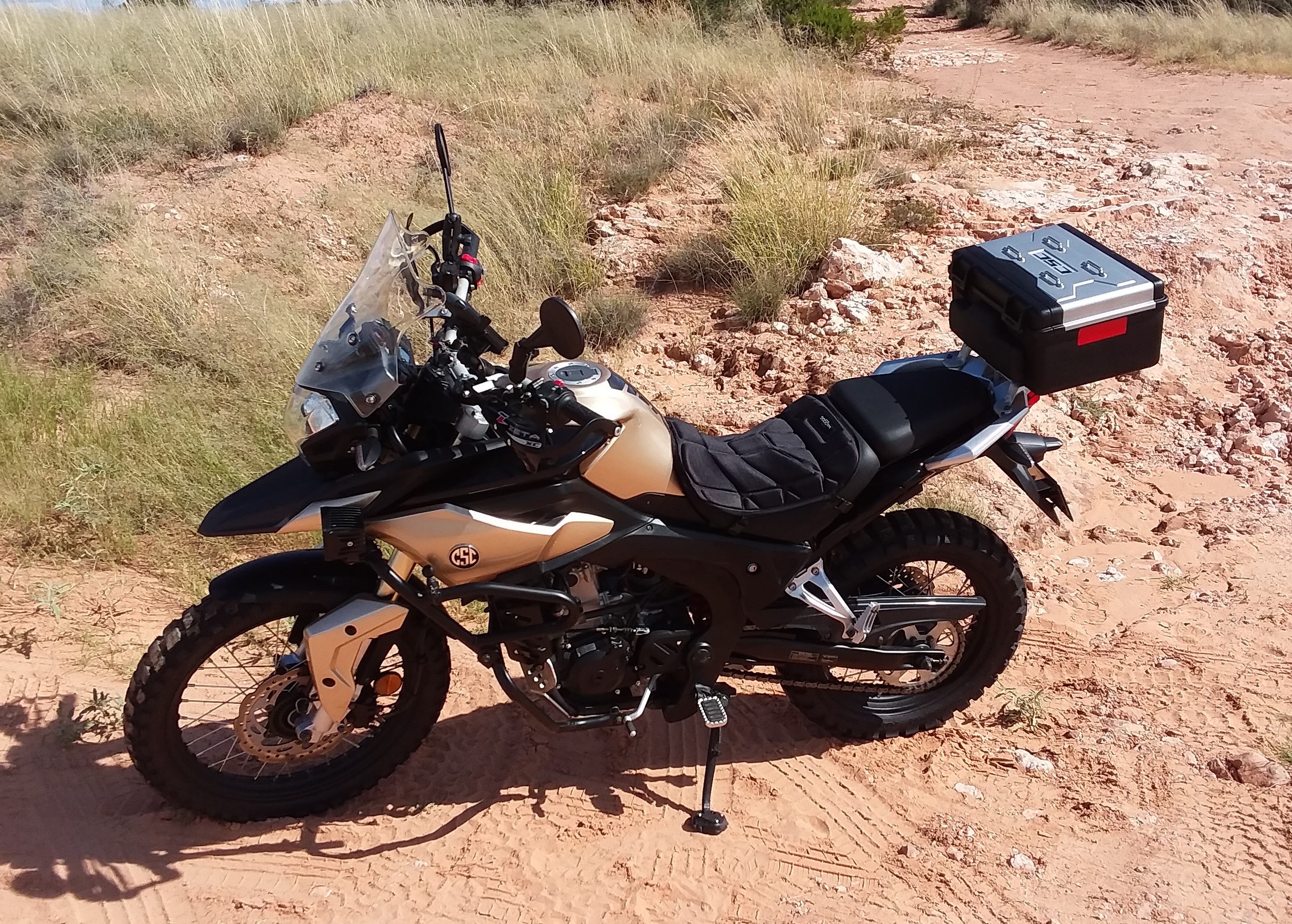
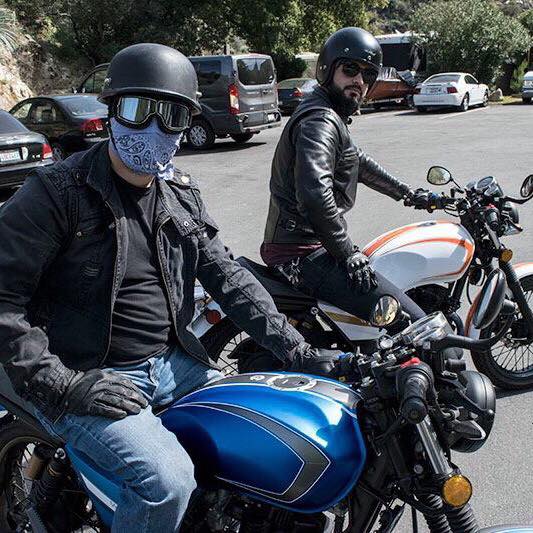

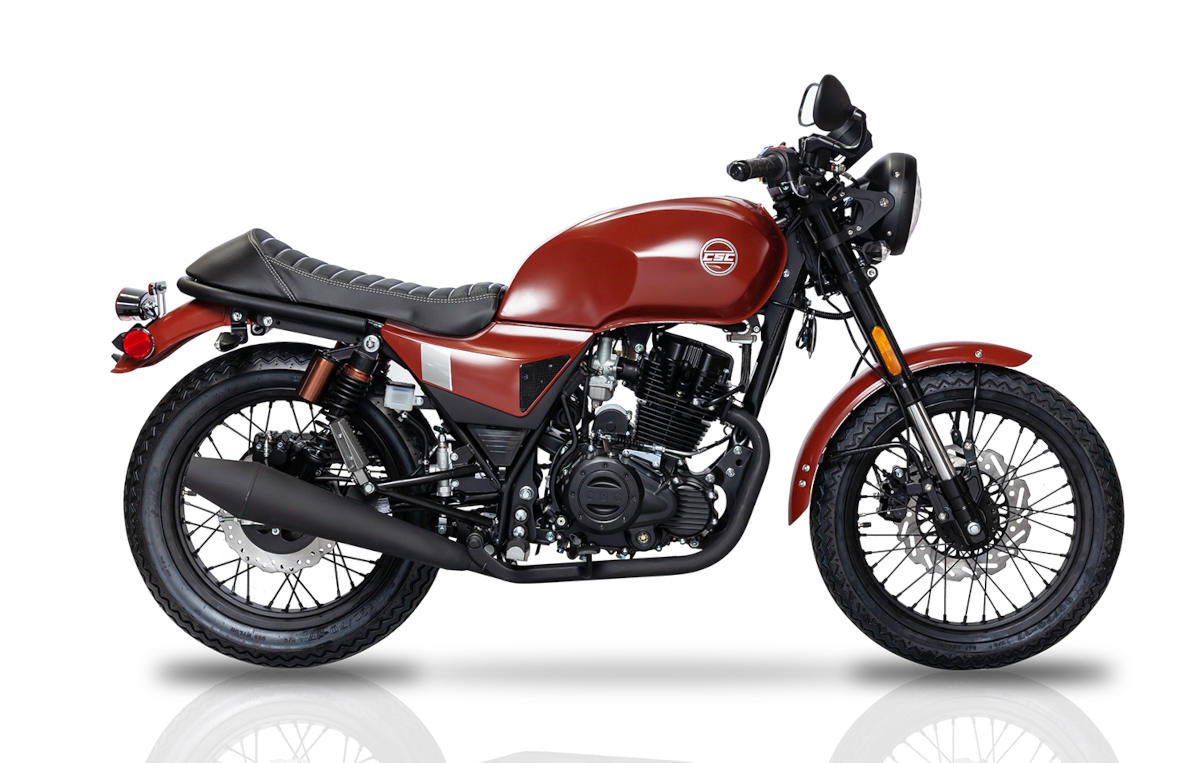 SG250 San Gabriel Cafe Racer
SG250 San Gabriel Cafe Racer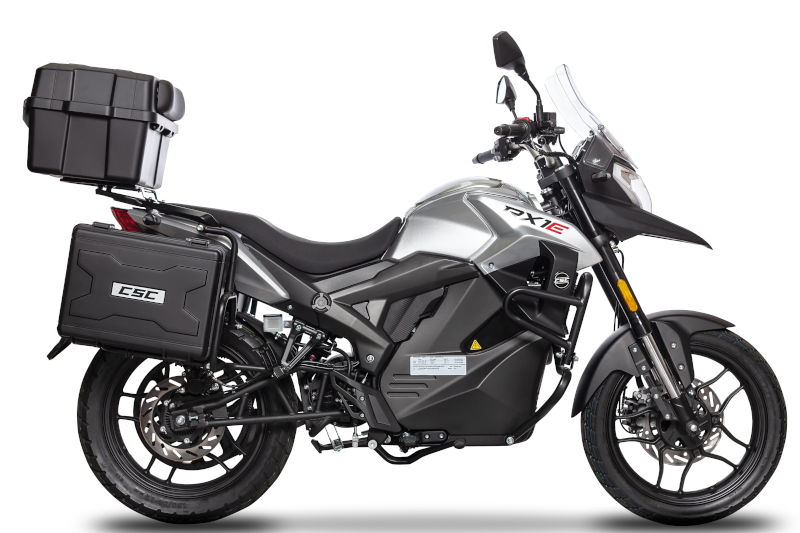 RX1E Electric Motorcycle
RX1E Electric Motorcycle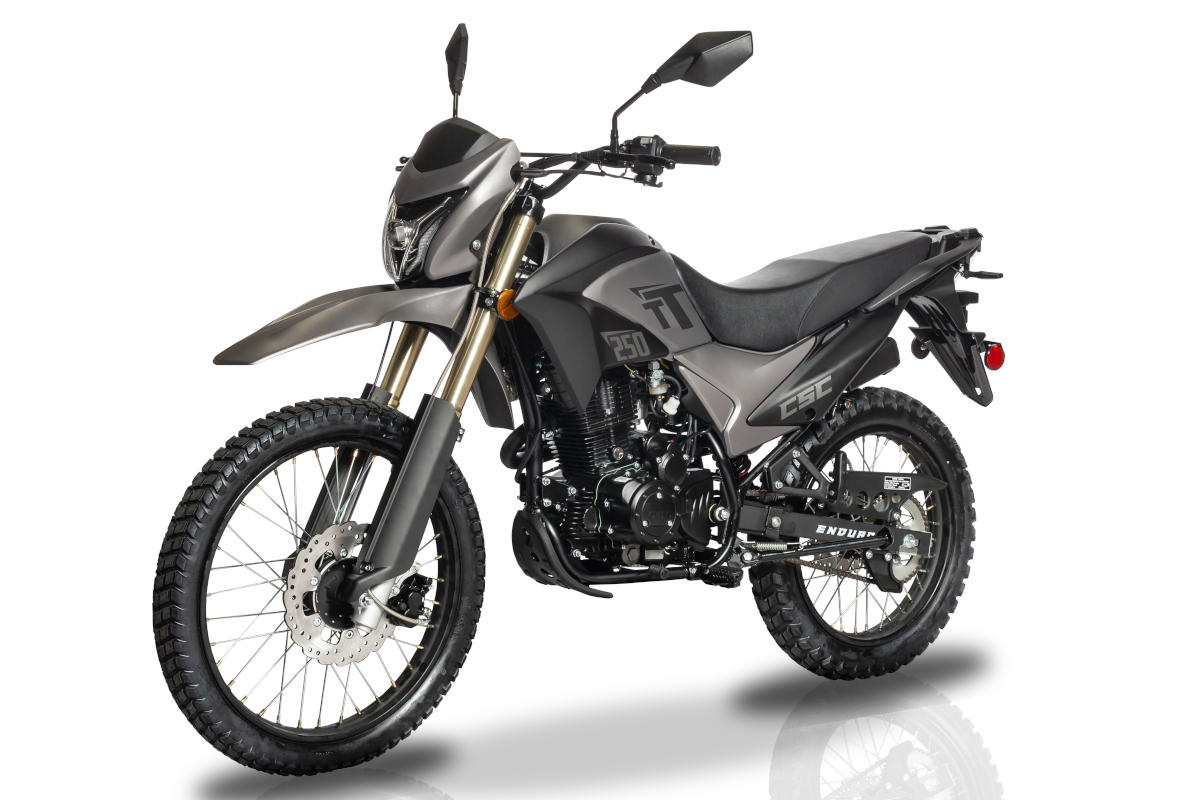 TT250 Enduro
TT250 Enduro